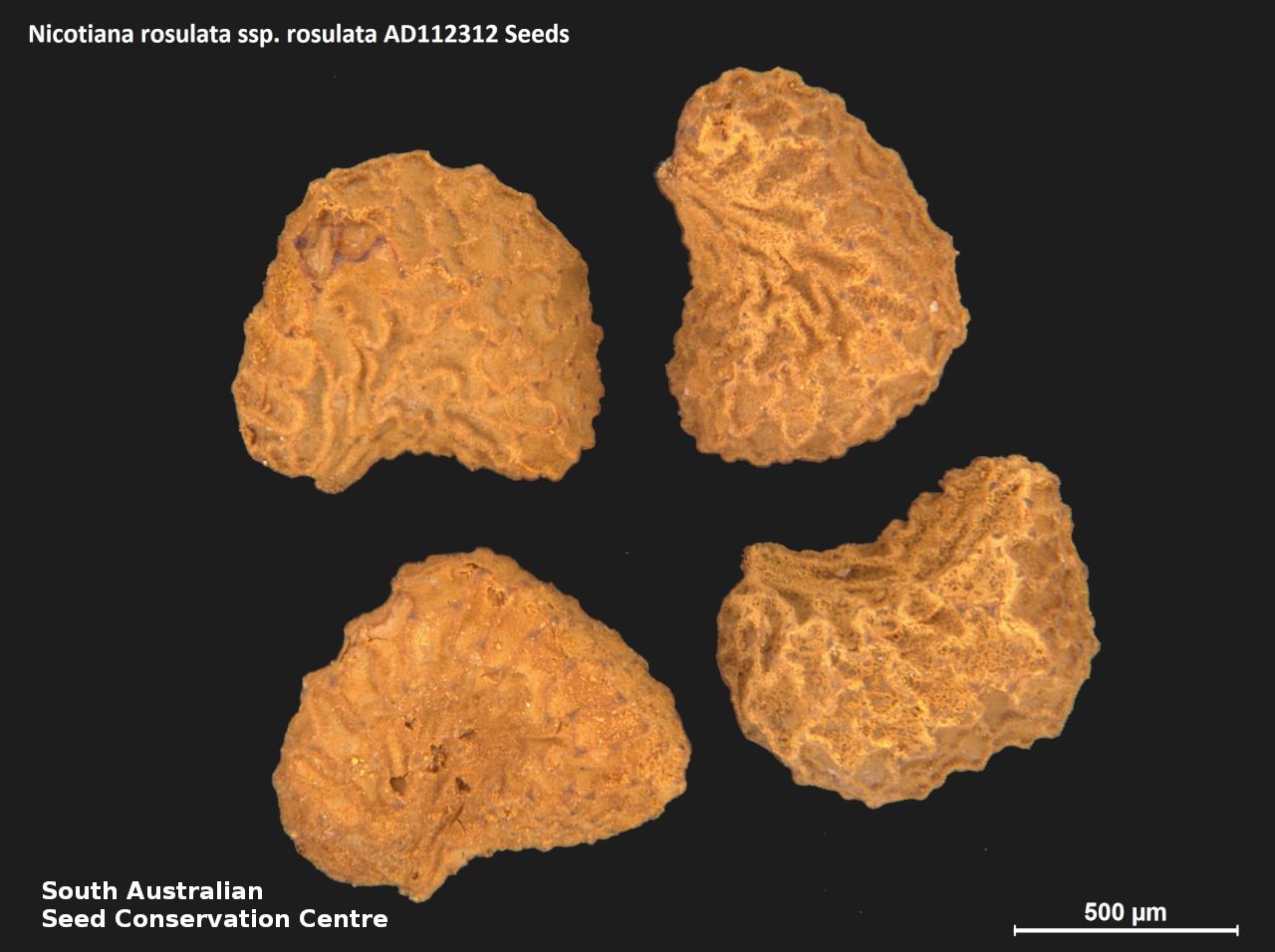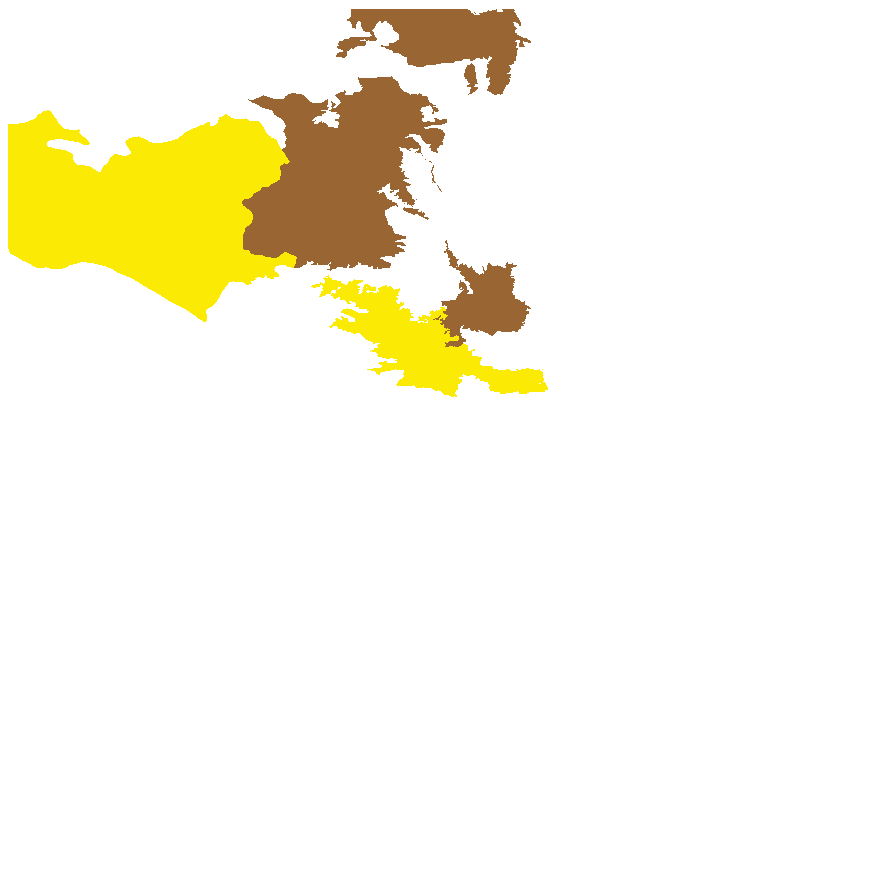


Prior names
Nicotiana suaveolens var. rosulata
Etymology
Nicotiana named after Jean Nicot (1530-1600), a French Ambassador for the King of France to Lisbon in 1560, who sent the first tobacco plant to France. Rosulata means leaves borne in a rosette.
Distribution and status
Found scattered in the western part of South Australia, growing in sandy or stony loamy soils in creeklines and hillsides. Also found in Western Australia and the Northern Territory. Native. Uncommon in South Australia. Uncommon in the Northern Territory. Common in Western Australia.
Herbarium regions: North Western, Lake Eyre, Gairdner-Torrens, Eyre Peninsula
NRM regions: Alinytjara Wilurara, Eyre Peninsula, South Australian Arid Lands
AVH map: SA distribution map (external link)
Plant description
Herb to 1 m high with sparse hairs, upper stem smooth. Leaves all or mostly at the base, to 15 rarely 21 cm long, elliptic, occasionally ovate or spathulate. Inflorescence an erect few branching panicle-spike with tubular white-cream flowers. This subspecies can be distinguish from Nicotiana rosulata ssp. ingulba by the lack of stem leaves, the non-glandular pubescence on the lower stems and leaves and by the corolla-tube usually less than 35 mm long. Flowering between April and September. Fruits are brown ellipsoid to ovoid capsule to 16 mm long. Seeds are brown reniform seed to 1 mm long and 0.7 mm wide, covered in small tubercules. Seed embryo type is linear fully developed.
Seed collection and propagation
Collect seeds between October and December. Collect mature capsules, those that are brown or turning a pale straw colour and contain brown seeds. Can collect individual capsules or break off the whole fruit spike. Place the capsules in a tray and leave to dry for one to two weeks. Then rub the capsules gently by hand to dislodge the seeds. Use a sieve to separate the unwanted material. Store the seeds with a desiccant such as dried silica beads or dry rice, in an air tight container in a cool and dry place. From one collection, the seed viability was high, at 100%.
| Location | No. of seeds (weight grams) | Number of plants | Date collected | Collection number Collection location | Date stored | % Viability | Storage temperature |
|---|---|---|---|---|---|---|---|
| BGA | 2,300 (0.43 g) | 40 | 27-Oct-2004 | MOL4645 Gairdner-Torrens | 28-Mar-2006 | 100% | -18°C |
Number of plants: This is the number of plants from which the seeds were collected.
Collection location: The Herbarium of South Australia's region name.
% Viability: Percentage of filled healthy seeds determined by a cut test or x-ray.